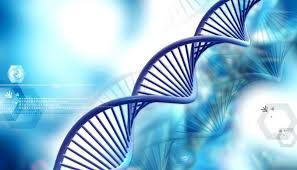NCCN Releases Guidelines for Pediatric Nephroblastoma Treatment
The National Comprehensive Cancer Network released the first set of guidelines for pediatric patients with nephroblastoma for oncologists and primary care physicians.

The National Comprehensive Cancer Network (NCCN) recently published new guidelines for the treatment of pediatric patients with nephroblastoma (Wilms tumor), the first ever set of guidelines published in the United States for children with a solid tumor, according to a press release from the organization.1
The purpose of the guidelines is to maximize the benefits of treatment for nephroblastoma while limiting the toxicities associated with treatment. Considering the rarity of the disease, the NCCN guidelines can provide crucial information for oncologists who treat patients with nephroblastoma. In addition, the guidelines provide important diagnostic information that can aid primary care physicians in identifying patients to refer to oncologists. The NCCN stated, in the press release that catching nephroblastoma early-on can improve cure rates.
“Keeping up with all of the current literature for the broad array of children’s oncologic and hematologic malignancies can be daunting. The NCCN Guidelines for Wilms Tumor provide compiled, annotated, and vetted recommendations for diagnosis, treatment, and follow up—in keeping with NCCN’s goals for streamlining and improving care so that patients can live better lives,” said Elizabeth Mullen, MD, from the Dana-Farber Boston Children's Cancer and Blood Disorders Center, and member of the NCCN Guidelines Panel for Wilms Tumor, in a statement. “People say Wilms is a ‘good cancer’ because it has a 90% cure rate but that still means too many children don’t survive. I won’t feel okay until we get that cure rate to 100%—with optimization of long-term wellness, fertility, and psycho-social wellbeing.”
“One of the most common ways that Wilms tumor is diagnosed in a child is through detection of an otherwise asymptomatic abdominal mass during a routine well childcare exam with their pediatrician,” explained Mullen in the release. “Now that some parents and guardians have had to delay these appointments or hold them virtually due to the COVID-19 pandemic, there is concern about the potential of an increase in higher-stage diagnoses.”1
Along with diagnostic and treatment guidelines, the NCCN guidelines also caution physicians to be careful when examining a patient, even if they’re considered healthy, for a mass in the kidney area. If too much force is applied when initially examining for the nephroblastoma the tumor can rupture, which would cause the cancer to spread within the kidney and possibly throughout other parts of the body.
Reference
- New NCCN Guidelines Analyze Evidence for Cancer Type Found Almost Exclusively in Children. News release. February 17, 2021. Accessed February 19, 2021. https://www.nccn.org/about/news/newsinfo.aspx?NewsID=2605
- National Comprehensive Cancer Network. Wilms Tumor: Nephroblastoma (Version1.2021). Accessed February 19, 2021. https://www.nccn.org/professionals/physician_gls/pdf/wilms_tumor.pdf